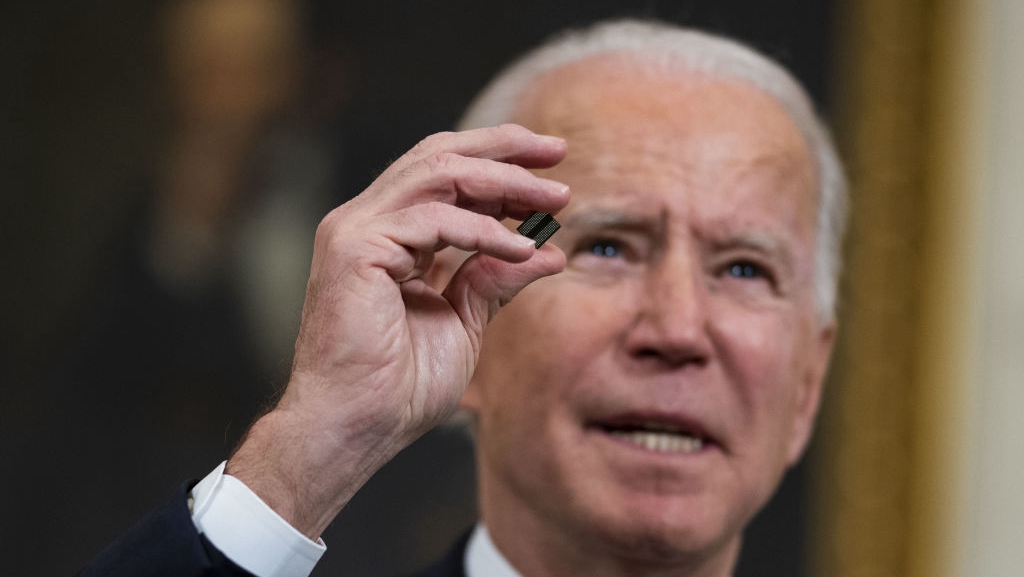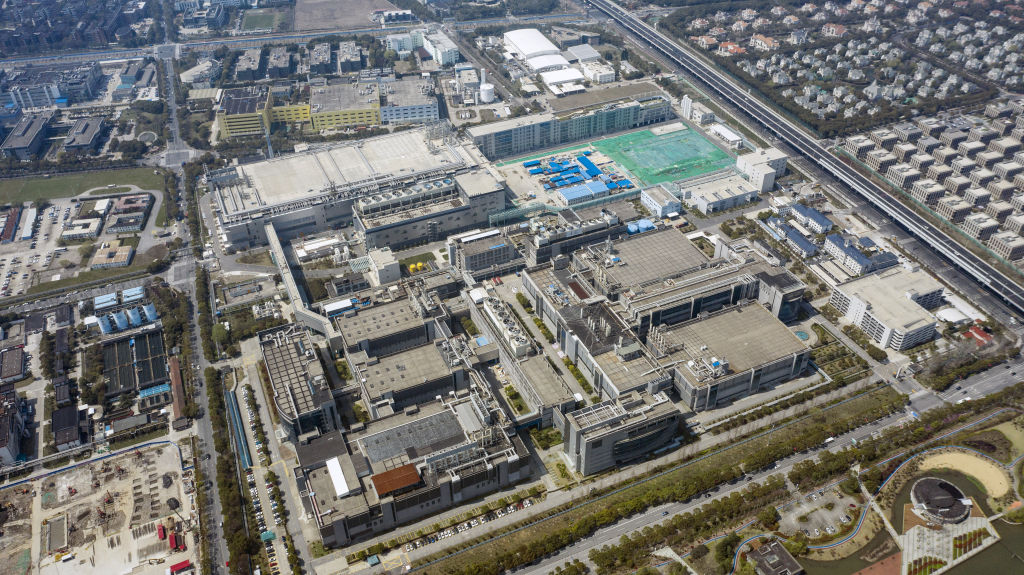
U.S. President Joe Biden holds a semiconductor before signing an executive order in the State Dining Room of the White House in Washington, D.C., U.S., February 24, 2021. /Getty
U.S. President Joe Biden holds a semiconductor before signing an executive order in the State Dining Room of the White House in Washington, D.C., U.S., February 24, 2021. /Getty
Editor's note: Andy Mok is a research fellow at the Center for China and Globalization. The article reflects the author's opinions, and not necessarily the views of CGTN.
U.S. semiconductor sanctions were intended to ensure continued American leadership in an industry that played a central role in powering the global economy and will make even greater contributions as the world continues its journey to digitization.
However, not only have these sanctions caused unexpected and widespread collateral damage to many industries around the world but they are undermining the position of the American semiconductor industry instead of strengthening it.
As intended, American sanctions achieved their goal of interrupting the development and ascent of Chinese technology companies. But these measures have also disrupted economic activity around the world in ways that American China hawks might not have anticipated.
In fact and remarkably, almost 170 industries, from consumer electronics to automobiles and air conditioners, have been negatively impacted by the semiconductor shortage that was precipitated in part by the stockpiling and panic buying in advance of these sanctions as well as by surprise surges in consumer demand for consumer electronics, automobiles and other products during the COVID-19 pandemic, according to research conducted by Goldman Sachs.
Every sound policy decision requires choosing a course of action that delivers the greatest benefit for achieving a desired strategic result at the lowest possible cost. The costs, including the collateral economic damage, of these sanctions have been high and are still rising.
For example, in the auto industry, factories in Germany, the U.S. and elsewhere have suspended production which is costing the industry billions and putting tens of thousands of jobs and fragile economic recoveries at risk. But if the objective of slowing China's rise and assuring American supremacy in the vitally important semiconductor industry is achieved, then perhaps this can be counted as a policy win.
However, China's response to U.S. sanctions seems to suggest that this policy is actually weakening the overall position of the American semiconductor industry. And if these sanctions continue, this may result in the permanent loss of American technology leadership.
To understand why, one must appreciate that the semiconductor industry is unique in that it requires exceptional levels of investment in both research and development and capital expenditures. For example, according to the Semiconductor Industry of America, the industry invested $90 billion in R&D and $110 billion in capital expenditures in 2019, which accounted for approximately 50 percent of $419 billion in global sales.
There are three major segments to the semiconductor value chain: design, front end manufacturing or wafer fabrication, and back end manufacturing or assembly, packaging and testing. China has traditionally been strongest in back end manufacturing while the U.S. has led in the areas supporting design and front end manufacturing such as electronic design automation (EDA), equipment and tools, and materials. Where Americans are not market leaders, the U.S. has the ability to dictate the business decisions of companies in places like China's Taiwan, Japan or the Netherlands.

The Semiconductor Manufacturing International Corp. (SMIC) headquarters in Shanghai, China, March 23, 2021. /Getty
The Semiconductor Manufacturing International Corp. (SMIC) headquarters in Shanghai, China, March 23, 2021. /Getty
By weaponizing access to key parts of the semiconductor value chain, the U.S. has forced China to prioritize the development of alternatives to preferred American vendors such as Applied Materials, Cadence, Lam Research and Synopsys as well as Dutch companies like Advanced Semiconductor Material Lithography (ASML) and Japanese ones like Canon and Tokyo Electron.
Given China's track record of successfully achieving large scale, well-integrated and technologically challenging projects, it seems likely to make significant progress in developing competitive alternatives to established players.
Because of the exceptional levels of investment in both R&D and capital expenditures, scale is vital to remaining technologically and commercially viable. Also, because of the absolute magnitude of the sunk costs, the barriers to exit are high.
If new entrants are able to overcome the daunting barriers, the impact on market incumbents may be devastating and American companies will be the ones to bear the brunt of losses in profitability, market capitalization and technological leadership.
In a recent speech at the Huawei Global Analyst Summit, rotating chairman Eric Xu noted that the semiconductor industry has benefitted from a highly specialized and globally distributed supply chain where every region contributes based on its own strengths. While American companies have pioneered and led the industry, recent American political decisions are putting this leadership, and perhaps even American prosperity and security, at risk by weaponizing this supply chain.
Specifically, China's government plans to invest $1.4 trillion over the next 6 years to develop chip manufacturing. Also, these sanctions have spurred Chinese chipmakers to accelerate production of 28-nanometer chips that are crucial for developing competencies in advanced chipmaking technologies.
Moreover, Chinese companies have begun switching orders for 14-nanometer chip sets from market leader Taiwan Semiconductor Manufacturing Company Limited (TSMC) to Semiconductor Manufacturing International Corporation (SMIC), China's leading semiconductor company.
SMIC will also begin trial production of 7-nanometer chips with mass production expected to begin in October but relying on Deep Ultraviolet (DUV) light technology instead of the more advanced Extreme Ultraviolet (EUV) because of American sanctions.
These sanctions have achieved a degree of short term success at great cost to not just American businesses but many others. But the true cost may be a permanent loss of leadership in key parts of the semiconductor supply chain by American companies. As the Biden administration formulates a comprehensive approach to China, these longer term implications should be considered.
(If you want to contribute and have specific expertise, please contact us at opinions@cgtn.com.)

